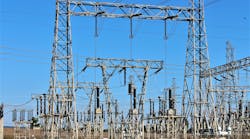I have a bit of wanderlust having worked at three large investor-owned utilities and three consulting companies serving the utility industry over my 40-year career. I have designed transmission lines, investigated failures, written standards and approved vendors. The greatest chunk of my time has been devoted to research and development, which I have truly enjoyed. I designed the world’s first 500-kV line on horizontal-V insulators through several housing developments sited along an old 69-kV corridor. It was neat to see the design materialize to mitigate electric and magnetic field levels on a right-of-way while providing additional transfer capacity.
But I have had more fun with my latest project related to dynamic line ratings (DLRs) than I ever could have anticipated. DLR has been around for decades but never reached mainstream application. When taking into account real-time ambient temperature, wind speed and wind direction, DLR uncovers more capacity than the static rating allows for the majority of the time.
The Right Weather Conditions
It has always amazed me that, for all intents, the same ambient weather conditions (104°F [40°C], 2 ft/sec [0.6 m/sec] wind, full sun) used in the Northeast are applied by most utilities across the South. If the conditions are supposed to represent a near-worst-case condition, which occurs a few days a year, why are the same conditions used for both the northern and the southern tier of utilities?
You need to know the temperature of the conductor and the ambient conditions to calculate a line’s maximum current before it would violate the National Electrical Safety Code clearances and operating criteria. So, you can measure the tension or position of the conductor, determine its temperature and calculate how much more current a line can carry and still be in compliance. What now? Fortunately, many of us are operating in systems that perform state-estimator analysis on a regular basis (for example, every 2 minutes to 5 minutes) and determine what the optimum generation dispatch should be for economic transfer of electricity across the transmission lines to meet demand and N-1 contingency compliance. If we stream the DLR data to the state estimator in real time, the system self-monitors and directs operation. How cool is that?
We’re moving into a dynamic operating realm that requires us to have our act together. This should excite us as we move to a dynamic world. So, what does it look like? We have the transparency of real-time line data feeding into our telemetry systems that has been collected for system operations.
Going forward, we will realize DLR will become the most effective approach to operating our system, will require the least operator intervention or training and will yield optimal line capacity at any given time.
Add Generation to the Mix
When lines have insufficient capacity to deliver power from the cheapest source, line congestion charges are incurred by the market, which adds the incremental cost of more expensive sources to customer invoices. I am presently focused on quantifying the impact DLR can have on reducing congestion costs, thus reducing electricity charges to customers.
One problem identified throughout the course of this DLR project is that congestion is volatile. It appears on specific lines for a myriad of combinations of conditions such as duration, time of year, time of day and level of impact (dollars). Congestion is market driven and dependent on individual generation unit bids in the daily market and on the demand of load sinks. Outages, which were thought to be a major source of congestion, only contributed toward 25% of the congestion costs. Congestion volatility is impacted by the addition of new lines, line upgrades and line upratings. But congestion volatility also is impacted by changes in generation patterns and generation offers bid into the market.
Chronic Congestion
A given line can be congested, accruing from thousands to millions of dollars of congestion one week and then not show up again for weeks, months or ever again.
More chronic instances of congestion can develop over time but are actually less likely than spurious encounters. Why is this? If you take a step back and consider the big picture, it makes sense. If a line does become chronic, it typically percolates to the top of a planning queue, and a capital investment is made to upgrade the line or add a parallel circuit. For the more volatile instances, DLR is a more logical solution as it has the flexibility to deliver a faster response than a capital investment. Often, the congestion disappears through any number of grid-topology changes.
After 40 years, I thought I knew about line ratings and how the grid operates, but I learned congestion is quite volatile and constantly variable, changing because of ambient conditions, grid topology and market play. Now, I have come to realize that once we learn to live with dynamic thermal ratings, we will never be able to live without them.
Tip Goodwin is a consulting engineer with Oncor Electric Delivery.


